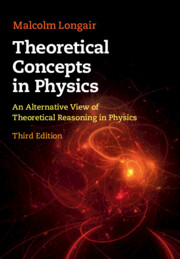Book contents
- Frontmatter
- Dedication
- Contents
- Preface and Acknowledgements
- 1 Introduction
- Case Study I The Origins of Newton’s Laws of Motion and of Gravity
- Case Study II Maxwell’s Equations
- Case Study III Mechanics and Dynamics: Linear and Non-linear
- Case Study IV Thermodynamics and Statistical Physics
- Case Study V The Origins of the Concepts of Quantisation and Quanta
- 13 Black-Body Radiation up to 1895
- 14 1895–1900: Planck and the Spectrum of Black-Body Radiation
- 15 Planck’s Theory of Black-Body Radiation
- 16 Einstein and the Quantisation of Light
- 17 The Triumph of the Light Quantum Hypothesis
- Case Study VI Special and General Relativity
- Case Study VII Cosmology and Physics
- Author Index
- Subject Index
14 - 1895–1900: Planck and the Spectrum of Black-Body Radiation
from Case Study V - The Origins of the Concepts of Quantisation and Quanta
Published online by Cambridge University Press: 27 March 2020
- Frontmatter
- Dedication
- Contents
- Preface and Acknowledgements
- 1 Introduction
- Case Study I The Origins of Newton’s Laws of Motion and of Gravity
- Case Study II Maxwell’s Equations
- Case Study III Mechanics and Dynamics: Linear and Non-linear
- Case Study IV Thermodynamics and Statistical Physics
- Case Study V The Origins of the Concepts of Quantisation and Quanta
- 13 Black-Body Radiation up to 1895
- 14 1895–1900: Planck and the Spectrum of Black-Body Radiation
- 15 Planck’s Theory of Black-Body Radiation
- 16 Einstein and the Quantisation of Light
- 17 The Triumph of the Light Quantum Hypothesis
- Case Study VI Special and General Relativity
- Case Study VII Cosmology and Physics
- Author Index
- Subject Index
Summary
Max Planck was an expert on classical thermodynamics and turned his attention to the understanding of black-body radiation in 1895. He worked out the form the radiation formula had to have from the emission and absorption of radiation of a dipole in thermal equilibrium with the radiation it emits. The formula related the mean energy density of radiation to the average energy of the oscillator. Using new precision measurements of the black-body spectrum, Planck derived the primitive form of the black-body spectrum by a combination of theory and the empirical results of experiment, but without any physical interpretation of the significance of the formula.
Keywords
- Type
- Chapter
- Information
- Theoretical Concepts in PhysicsAn Alternative View of Theoretical Reasoning in Physics, pp. 348 - 372Publisher: Cambridge University PressPrint publication year: 2020

